Nestled high in the Andes Mountains, Machu Picchu is more than just an ancient citadel; it’s a destination rich in culture, history, and natural beauty. While exploring the iconic ruins is a must, the surrounding area offers a plethora of activities to enhance your Machu Picchu experience. Here’s a guide to the enchanting things to do in this mystical region:
1. Hike the Inca Trail:
The Inca Trail is one of the most iconic and sought-after trekking routes in the world, leading adventurers through stunning Andean landscapes and ancient Inca ruins. This multi-day trek culminates in the breathtaking arrival at Machu Picchu, offering a unique and rewarding experience for those willing to take on the challenge.
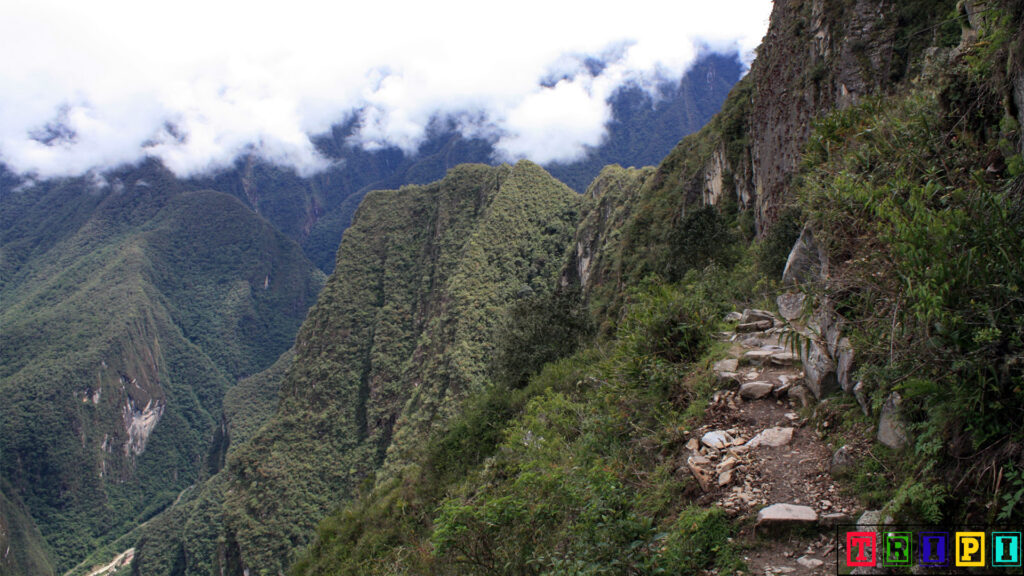
Key Highlights:
- Scenic Landscapes: The Inca Trail takes you through diverse ecosystems, including cloud forests, alpine tundra, and subtropical jungles. The ever-changing scenery adds to the allure of the trek.
- Ancient Ruins: Along the trail, hikers encounter various Inca ruins such as Winay Wayna, Phuyupatamarca, and Intipata. These archaeological sites provide a glimpse into the history and engineering marvels of the Inca civilization.
- Sun Gate Arrival: The climax of the Inca Trail is the arrival at the Sun Gate (Inti Punku), where trekkers are rewarded with the first panoramic view of Machu Picchu. This moment is often timed to coincide with sunrise for a truly magical experience.
- Limited Permits: Due to its popularity and the need to preserve the trail, there is a limit to the number of permits issued daily. Planning in advance is crucial for securing a spot on this renowned trek.
Tips for Hiking the Inca Trail:
- Book in Advance: Secure your permits well in advance, especially during the high season (May to September).
- Physical Preparation: The trail involves challenging uphill and downhill sections, so it’s essential to be physically prepared for the trek.
- Guided Tours: Many travelers opt for guided tours, providing not only logistical support but also cultural insights from knowledgeable guides.
- Pack Essentials: Pack wisely with essentials like comfortable hiking boots, weather-appropriate clothing, a good backpack, and a refillable water bottle.
Embarking on the Inca Trail is not just a physical journey but a cultural and historical immersion, offering a profound connection to the ancient civilization that once thrived in the Andean mountains. Whether you’re a seasoned trekker or a first-time hiker, the Inca Trail is an experience that will stay with you forever.
2. Machu Picchu Sunrise:
- Mystical Atmosphere: As the first light of day gently illuminates the ancient citadel, Machu Picchu emerges from the shadows, creating an ethereal and mystical atmosphere. The morning mist often hovers over the ruins, adding to the enchantment.
- Photographer’s Delight: The sunrise offers unparalleled opportunities for photography. The changing colors of the sky, the play of light and shadows on the stone structures, and the panoramic views make it a photographer’s delight.
- Calm and Serenity: Early morning visits to Machu Picchu allow you to experience the site in a more peaceful and serene state. The tranquility of the surroundings enhances the spiritual and meditative aspects of the ancient city.
- Strategic Viewing Points: There are specific locations within Machu Picchu that are ideal for sunrise viewing. The Intihuatana stone and the Caretaker’s Hut offer strategic vantage points to observe the sun’s first rays kissing the sacred grounds.
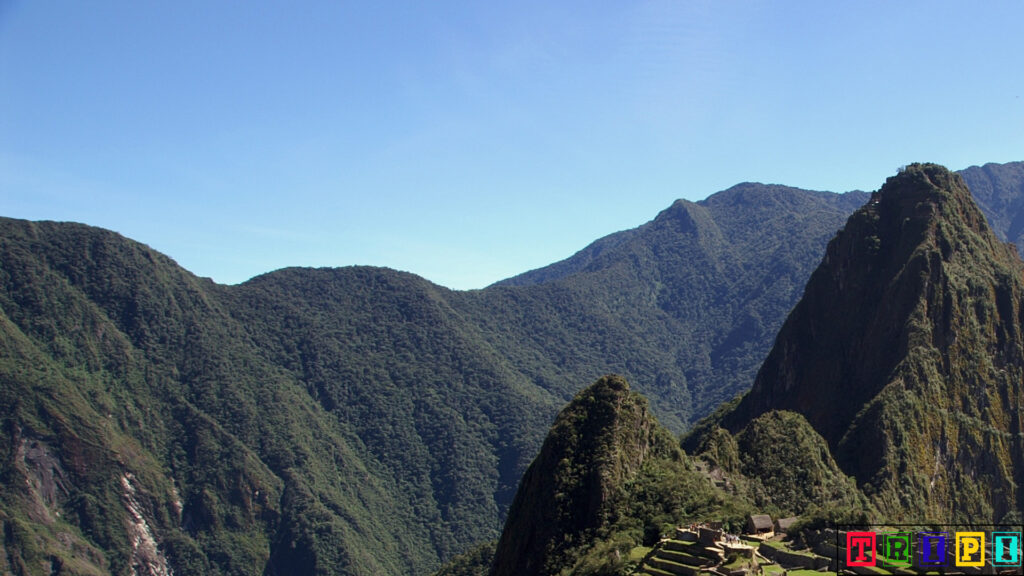
Tips for Experiencing Machu Picchu Sunrise:
- Arrive Early: Ensure you enter the site early to find a good spot for sunrise viewing. The entrance gates typically open at 6:00 AM.
- Weather Considerations: Machu Picchu’s weather can be unpredictable. Dress in layers, and bring a light rain jacket or poncho just in case.
- Guided Tours: Consider joining a guided tour that includes sunrise viewing. Guides often share insightful information about Machu Picchu’s history and significance.
- Respectful Observation: While enjoying the sunrise, be mindful of fellow visitors and the sacredness of the site. Maintain a respectful and quiet atmosphere.
Experiencing Machu Picchu at sunrise is not just about capturing a beautiful moment; it’s about connecting with the ancient energy of the citadel as it comes to life with the rising sun. It’s a spiritual and awe-inspiring start to your Machu Picchu adventure.
3. Explore the Inca Bridge:
Discover a Hidden Gem with Spectacular Views
While Machu Picchu’s main structures are well-known, there are hidden gems within the site that offer unique perspectives. One such feature is the Inca Bridge, a secret entrance that showcases the remarkable engineering skills of the ancient Incas.
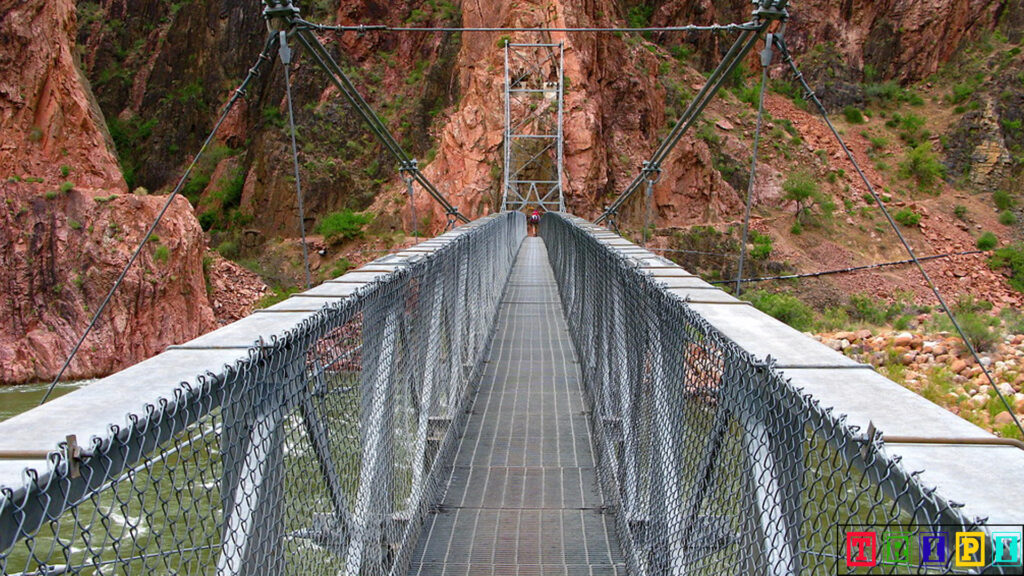
Key Highlights:
- Location and Access: The Inca Bridge is located to the southwest of Machu Picchu, and reaching it involves a short hike along a narrow and cliffside trail. The path itself is an adventure, providing glimpses of the stunning surroundings.
- Natural Defenses: The purpose of the Inca Bridge was likely defensive. It consists of a wooden bridge structure with a stone path that leads to a narrow gap in the cliff face. In times of danger, the Incas could remove the bridge, creating a natural barrier.
- Panoramic Views: The trail to the Inca Bridge offers panoramic views of the rugged landscape, including deep valleys and the Vilcanota River below. It’s an excellent opportunity for photography and a different perspective of Machu Picchu.
- Photographing the Inca Bridge: While visitors cannot cross the bridge itself due to preservation efforts, there are designated viewpoints that allow for stunning photographs of this architectural marvel against the backdrop of the Andes.
Tips for Exploring the Inca Bridge:
- Comfortable Footwear: Wear sturdy and comfortable footwear as the trail involves uneven terrain. Sneakers or hiking shoes are recommended.
- Guided Tours: Guides often provide valuable insights into the historical significance of the Inca Bridge and the surrounding landscape. Consider joining a guided tour for a richer experience.
- Caution and Safety: The trail can be narrow and uneven, so exercise caution, especially if you have a fear of heights. Stay within designated areas for safety.
Exploring the Inca Bridge adds an adventurous and off-the-beaten-path dimension to your Machu Picchu visit. It not only showcases the ingenious architectural skills of the Incas but also provides a tranquil escape with breathtaking views of the surrounding natural beauty.
4. Visit the Sun Gate (Inti Punku):
A Pilgrimage to the Original Entrance with Breathtaking Views
The Sun Gate, known as Inti Punku in Quechua, is an ancient entrance to Machu Picchu and offers visitors a spectacular viewpoint. Historically, it served as the main gateway for pilgrims arriving via the Inca Trail. Here’s what makes the visit to the Sun Gate a memorable part of your Machu Picchu experience:
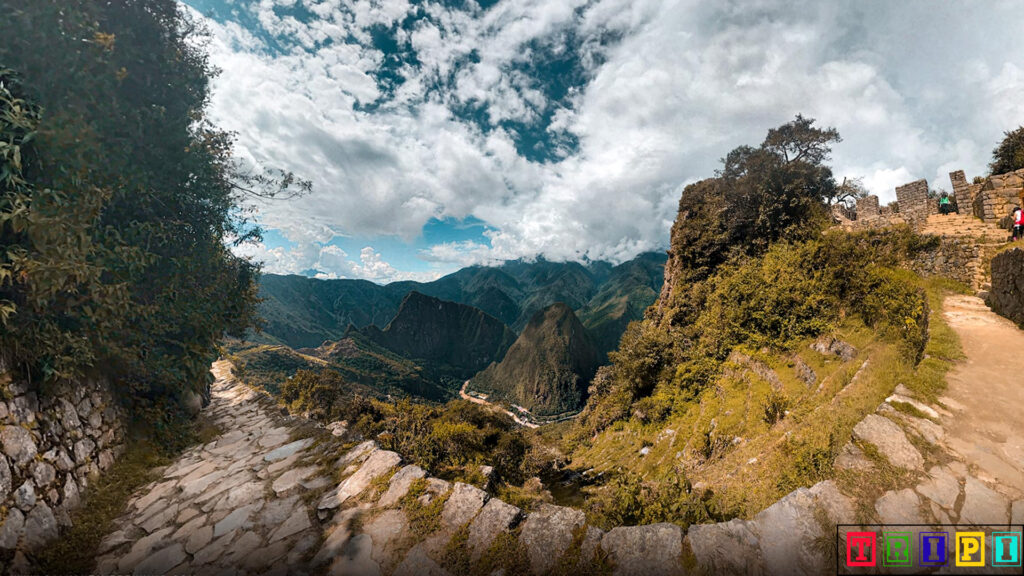
Key Highlights:
- Original Inca Entrance: The Sun Gate was the original entrance for those completing the Inca Trail pilgrimage to Machu Picchu. As you approach the site, you follow in the footsteps of ancient travelers who would have marveled at their first view of the citadel.
- Panoramic Overlook: Positioned at an elevation higher than Machu Picchu, the Sun Gate provides a panoramic view of the entire citadel. The sight is particularly breathtaking during the early morning or late afternoon when the sun bathes the ruins in warm hues.
- Trekking Adventure: Reaching the Sun Gate involves a moderate hike along the Inca Trail. The journey offers additional opportunities to explore Inca ruins along the way and experience the diverse ecosystems surrounding Machu Picchu.
- Photography Opportunities: The strategic location of the Sun Gate allows for stunning photographs of Machu Picchu from a distance. Capture the iconic citadel against the backdrop of the Andean mountains.
Tips for Visiting the Sun Gate:
- Early Departure: To witness the sunrise from the Sun Gate, plan your hike early in the morning. Check the opening times of the site to ensure you have sufficient time to reach the viewpoint.
- Comfortable Attire: Wear comfortable clothing and sturdy shoes suitable for hiking. Layers are recommended to accommodate changes in temperature.
- Guided Tours: Joining a guided tour can enhance your experience by providing historical context and insights into the significance of the Sun Gate in Inca culture.
- Permit Considerations: If you’re not trekking the Inca Trail, ensure that your Machu Picchu entrance ticket includes access to the Sun Gate.
Visiting the Sun Gate offers a unique perspective on Machu Picchu and a connection to the spiritual journey that ancient pilgrims undertook. It’s a rewarding adventure that combines history, nature, and breathtaking vistas into a single unforgettable experience.
5. Machu Picchu Museum:
Journey Through History Beyond the Citadel Walls
While exploring the ancient ruins of Machu Picchu is awe-inspiring, delving into the history and culture of the site is enriched by a visit to the Machu Picchu Museum. Located in Aguas Calientes, the town at the base of Machu Picchu, the museum provides a deeper understanding of the archaeological marvel you’re about to witness.
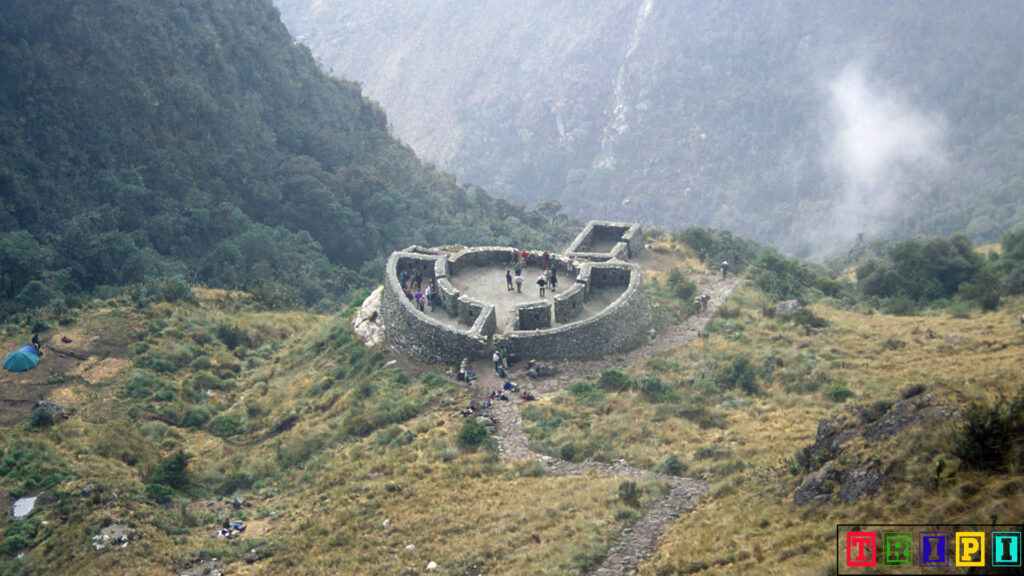
Key Highlights:
- Artifact Exhibits: The Machu Picchu Museum houses a collection of artifacts discovered during excavations at the site. These artifacts include pottery, tools, textiles, and other items that offer insights into the daily life and customs of the Inca civilization.
- Archaeological Discoveries: Learn about the archaeological efforts and discoveries that have shaped our understanding of Machu Picchu. The museum showcases the meticulous work of researchers and archaeologists who have unearthed the secrets of this ancient city.
- Interactive Displays: Many exhibits feature interactive displays, allowing visitors to engage with the history of Machu Picchu in a hands-on way. Multimedia presentations and informative panels enhance the learning experience.
- Cultural Context: Gain a broader understanding of the cultural and historical context of Machu Picchu. The museum explores the significance of the site within the broader Inca Empire and its importance as a ceremonial and agricultural center.
Tips for Visiting the Machu Picchu Museum:
- Pre-Visit Research: Familiarize yourself with the basics of Machu Picchu’s history before visiting the museum. This will enhance your appreciation of the artifacts and displays.
- Combine with Aguas Calientes Exploration: Plan to visit the museum as part of your exploration of Aguas Calientes. The town offers additional insights into local culture and serves as a gateway to Machu Picchu.
- Guided Tours: Consider joining a guided tour of the museum. Guides can provide context, share interesting anecdotes, and ensure you don’t miss any significant exhibits.
- Respect Preservation Efforts: Some artifacts may be delicate, so be mindful of preservation efforts by adhering to museum rules and not touching items unless allowed.
A visit to the Machu Picchu Museum serves as a captivating prelude to your exploration of the citadel. It allows you to connect with the rich history of Machu Picchu and appreciate the efforts undertaken to preserve and understand this UNESCO World Heritage Site.
6. Relax in Aguas Calientes Hot Springs:
Soothing Waters Amidst Andean Serenity
After a day of exploration at Machu Picchu, immerse yourself in relaxation by visiting the Aguas Calientes hot springs. Located in the town at the base of Machu Picchu, these thermal baths offer a therapeutic experience surrounded by the breathtaking landscapes of the Andes.
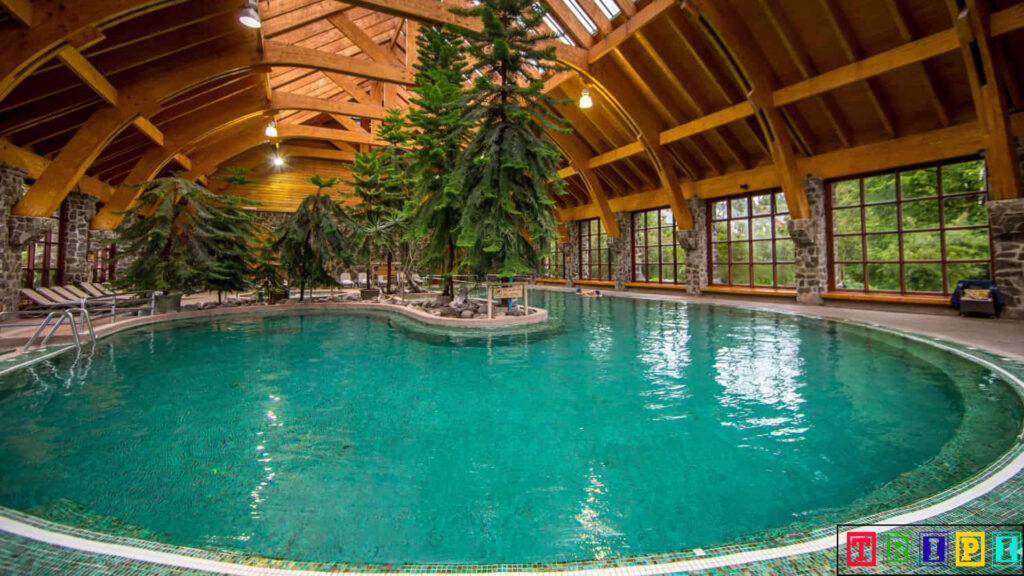
Key Highlights:
- Natural Thermal Springs: Aguas Calientes is renowned for its natural hot springs, which are believed to have therapeutic properties. The warm and mineral-rich waters provide a soothing and rejuvenating experience, perfect for unwinding after a day of trekking or exploring.
- Scenic Setting: The hot springs are nestled amidst lush greenery and mountains, creating a tranquil and picturesque setting. Enjoy the serene atmosphere as you soak in the warm waters with views of the surrounding Andean landscape.
- Open-Air Pools: The hot springs typically consist of several open-air pools of varying temperatures. Visitors can choose pools that suit their comfort level, from hotter pools to cooler ones, creating a customizable and enjoyable experience.
- Evening Relaxation: Consider visiting the hot springs in the evening, especially during sunset. The changing colors of the sky and the peaceful ambiance add to the overall relaxation, creating a memorable end to your day.
Tips for Enjoying Aguas Calientes Hot Springs:
- Bring Swimwear: Ensure you have appropriate swimwear before heading to the hot springs. Many facilities offer rentals if needed.
- Check Operating Hours: Verify the opening and closing times of the hot springs, as they may vary. Some visitors prefer to unwind in the evening to enjoy the tranquil atmosphere.
- Hydration: Drink plenty of water to stay hydrated, especially if you’ve been active during the day. The mineral-rich waters of the hot springs can be dehydrating.
- Relaxation Time: Plan for a leisurely soak, allowing yourself enough time to fully relax and enjoy the therapeutic benefits of the hot springs.
The Aguas Calientes hot springs provide a perfect blend of relaxation and natural beauty, making them an ideal complement to the adventure and exploration of Machu Picchu. It’s a serene and rejuvenating way to conclude your day in this remarkable corner of the Andes.
7. Climb Huayna Picchu or Machu Picchu Mountain:
Elevate Your Adventure with Panoramic Views
For those seeking a more elevated adventure and breathtaking panoramic views of Machu Picchu, consider trekking to either Huayna Picchu or Machu Picchu Mountain. These towering peaks provide a different perspective of the ancient citadel and its surrounding landscapes.
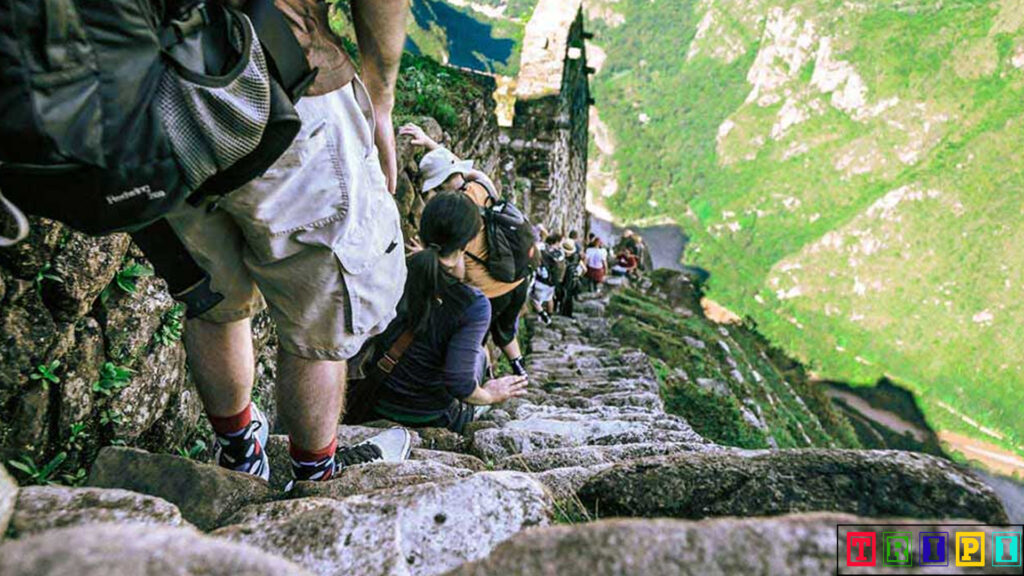
Key Highlights:
- Huayna Picchu: This iconic peak, often seen in the background of classic Machu Picchu photos, offers a challenging yet rewarding hike. The trail takes you through ancient terraces and stone staircases, leading to the summit that provides stunning views of Machu Picchu and the Urubamba River below.
- Machu Picchu Mountain: An alternative to Huayna Picchu, Machu Picchu Mountain is a higher peak that offers equally impressive vistas. The trek to Machu Picchu Mountain is less steep than Huayna Picchu but still provides a challenging ascent, rewarding hikers with unparalleled views of the entire archaeological site.
- Limited Permits: Similar to the Inca Trail, there is a limit to the number of permits issued daily for both Huayna Picchu and Machu Picchu Mountain. Planning in advance and securing these permits is essential, especially during peak tourist seasons.
- Bird’s-Eye View: Ascending either peak grants you a bird’s-eye view of Machu Picchu, allowing you to appreciate the layout and architectural intricacies of the citadel. The surrounding valleys and mountains create a majestic backdrop for your exploration.
Tips for Climbing Huayna Picchu or Machu Picchu Mountain:
- Permit Reservation: Secure your permit well in advance, as they are limited and can sell out quickly.
- Physical Fitness: Both treks require a reasonable level of physical fitness. Be prepared for steep ascents, uneven terrain, and high altitudes.
- Early Start: Begin your ascent early in the day to avoid midday heat and to have ample time to explore the summit and enjoy the views.
- Guided Tours: Consider joining a guided tour for insights into the historical significance of these peaks and the surrounding landscape.
Climbing Huayna Picchu or Machu Picchu Mountain adds an exhilarating dimension to your visit, allowing you to marvel at the architectural marvel from above and appreciate the vast beauty of the Andean landscape that envelops this ancient wonder.
8. Participate in a Traditional Pachamanca:
Immerse yourself in the rich culinary traditions of Peru by participating in a Pachamanca, a traditional Andean cooking method that dates back to Inca times. This communal meal preparation is not only a feast for the taste buds but also a unique cultural experience.
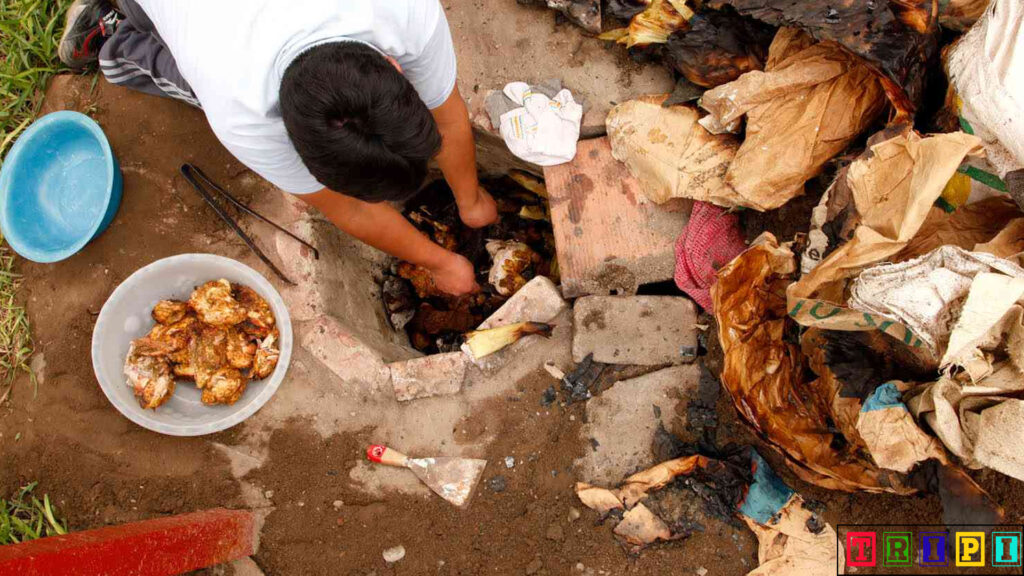
Key Highlights:
- Pachamanca Preparation: Pachamanca involves cooking various meats, potatoes, vegetables, and herbs in an underground oven. Hot stones are heated in a fire, and the ingredients are placed on top of the stones, covered with leaves, and left to slow-cook in the earth, resulting in a delicious and flavorful meal.
- Cultural Significance: The Pachamanca is more than just a method of cooking; it holds cultural significance in Andean communities. The term “Pachamanca” translates to “earth pot” in Quechua, emphasizing the connection between the earth, nature, and the food that sustains life.
- Community Experience: Participating in a Pachamanca often involves a communal effort, where everyone contributes to the preparation, from marinating the meats to arranging the layers in the earth oven. This fosters a sense of community and shared responsibility.
- Flavorful Results: The slow-cooking process allows the flavors to meld and intensify, resulting in tender and succulent dishes. Enjoy the unique taste of Pachamanca-prepared meats, potatoes, and vegetables seasoned with traditional herbs and spices.
Tips for Participating in a Pachamanca:
- Local Guidance: Many local communities near Machu Picchu offer Pachamanca experiences. Seek guidance from locals or tour operators to find an authentic and culturally rich opportunity.
- Respect Tradition: Approach the Pachamanca experience with respect for the cultural traditions and customs associated with the meal preparation.
- Social Interaction: Use the opportunity to interact with locals, learn about their culinary traditions, and share stories around the communal table.
- Plan in Advance: Pachamanca experiences may require advance booking, especially if you are part of a larger group. Confirm details such as timing, location, and any dietary preferences.
Participating in a Pachamanca provides a unique blend of culinary adventure and cultural immersion, allowing you to savor the flavors of Peru while connecting with the traditions that have been passed down through generations.
9. Stroll through the Agricultural Terraces:
Discover the Ingenious Farming Techniques of the Incas
While the grandeur of Machu Picchu’s architectural marvels is captivating, don’t miss the opportunity to explore the intricate agricultural terraces that surround the ancient citadel. These terraces served a vital role in sustaining the Inca population and showcase the advanced farming techniques employed by this ancient civilization.
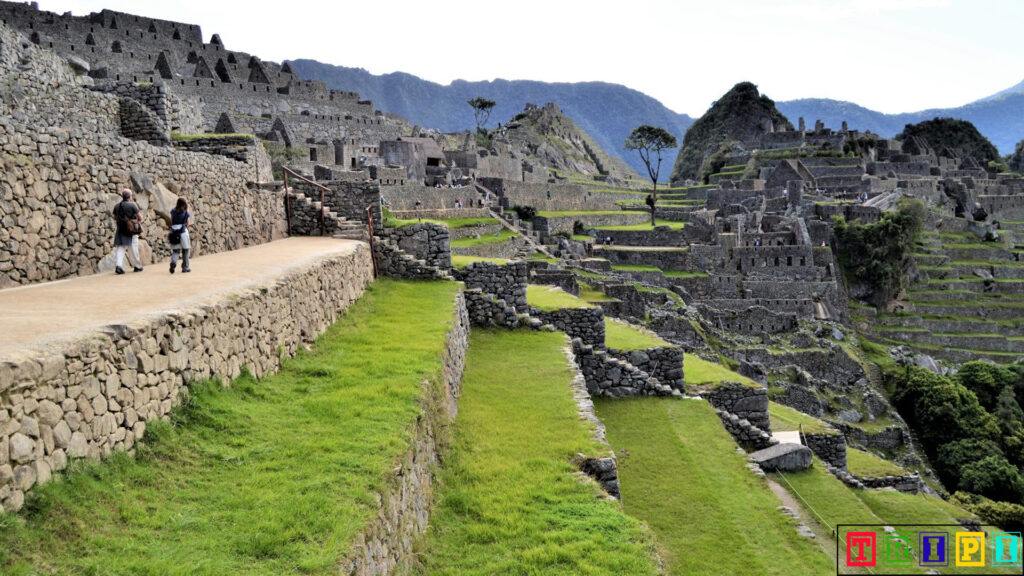
Key Highlights:
- Architectural Precision: The agricultural terraces at Machu Picchu are a testament to the engineering prowess of the Incas. Carved into the mountainside, these terraces demonstrate a sophisticated understanding of water management, soil conservation, and maximizing arable land in a challenging mountainous environment.
- Crop Diversity: The terraces were designed to accommodate a variety of crops, taking advantage of microclimates created by the varying elevations. The Incas cultivated a range of crops, including maize (corn), potatoes, quinoa, and medicinal plants, showcasing their agricultural knowledge.
- Water Management: The Incas ingeniously designed a system of channels and stone-lined irrigation to efficiently distribute water across the terraces. This intricate water management system played a crucial role in ensuring consistent crop yields.
- Spectacular Views: As you stroll along the terraces, enjoy panoramic views of Machu Picchu and the surrounding mountains. The terraced landscape not only served a practical purpose but also added to the aesthetic beauty of the site.
Tips for Exploring the Agricultural Terraces:
- Take Your Time: Allocate ample time to explore the terraces at a leisurely pace. This allows you to appreciate the craftsmanship and strategic layout of the agricultural structures.
- Guided Interpretation: Consider joining a guided tour that focuses on the agricultural aspects of Machu Picchu. Guides can provide insights into the historical and cultural significance of these terraces.
- Photography Opportunities: The terraces offer excellent photo opportunities, especially during different times of the day when the sunlight accentuates the textures of the stone structures.
- Mindful Exploration: Respect the preservation efforts in place and avoid climbing on the terraces. Stay on designated paths to protect both the structures and the delicate ecosystem.
Exploring the agricultural terraces at Machu Picchu provides a window into the sustainable farming practices of the Inca civilization. It’s a chance to appreciate the harmonious integration of architecture and agriculture that allowed Machu Picchu to thrive in its mountainous setting.
10. Birdwatching in Machu Picchu National Park:
- Avian Biodiversity: Machu Picchu and its surrounding cloud forests are home to a rich variety of bird species. From colorful hummingbirds and toucans to elusive Andean condors, the park offers a chance to encounter a diverse array of birds in their natural habitat.
- Spectacular Settings: Birdwatching in Machu Picchu National Park allows you to enjoy your hobby against the backdrop of stunning landscapes. The lush greenery, Andean peaks, and ancient ruins create a picturesque setting for observing the feathered inhabitants.
- Notable Bird Species: Keep an eye out for iconic bird species such as the Andean cock-of-the-rock, the Andean condor, the Inca wren, and various species of hummingbirds. Each species contributes to the vibrant tapestry of avian life in the region.
- Trails and Pathways: While exploring the park’s trails and pathways, be attentive to the sounds and movements of the birds. Many species can be spotted flitting through the trees or perched on branches.
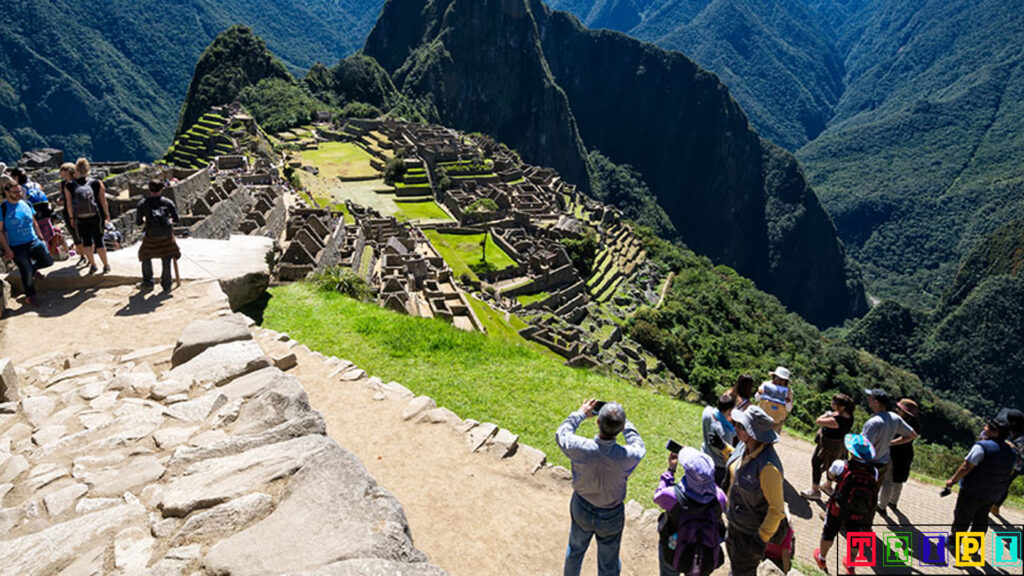
Tips for Birdwatching in Machu Picchu National Park:
- Binoculars and Field Guide: Bring a pair of binoculars and a bird field guide specific to the region to enhance your birdwatching experience.
- Patience and Silence: Birds are more likely to reveal themselves when there is minimal noise. Exercise patience and maintain a quiet demeanor to observe their natural behaviors.
- Early Mornings: Many bird species are more active during the early morning hours, making it an ideal time for birdwatching. Consider starting your day with a birding excursion.
- Respectful Observation: While observing birds, maintain a respectful distance to avoid disturbing them. Follow ethical birdwatching practices to protect both the birds and their habitats.
Birdwatching in Machu Picchu National Park adds a layer of natural beauty to your visit, allowing you to connect with the diverse ecosystems that complement the historical significance of the ancient citadel. Whether you’re a seasoned birder or a casual observer, the avian wonders of Machu Picchu are sure to leave a lasting impression.
Machu Picchu is a destination that invites you to explore not just its iconic citadel but also the wonders that lie beyond. Whether you’re an adventure seeker, history enthusiast, or nature lover, there’s something magical for every traveler in this Peruvian treasure.

[…] Machu Picchu, Peru […]